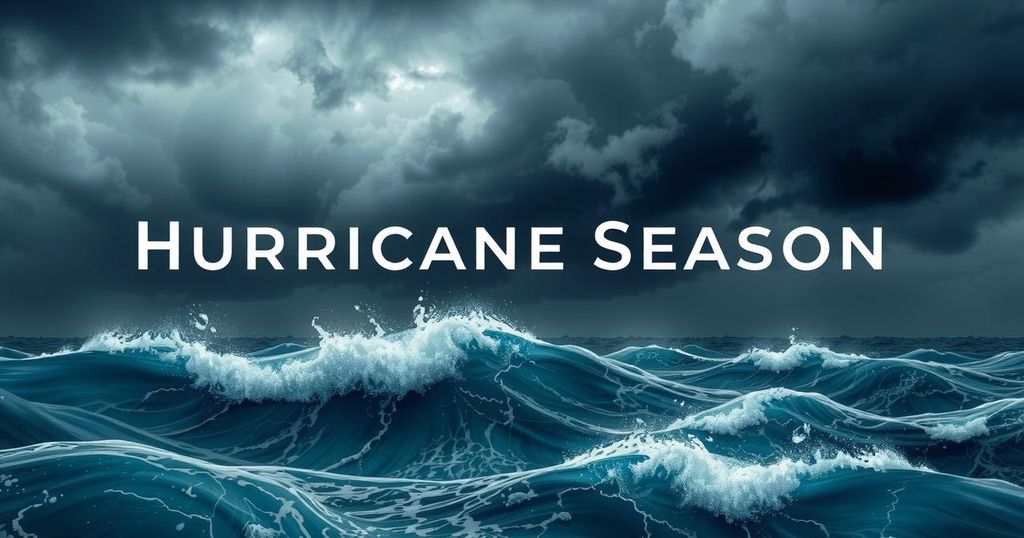AccuWeather Forecasts Near to Above Average Atlantic Hurricane Season for 2025
AccuWeather forecasts a near to above average Atlantic hurricane season for 2025, predicting 13-18 named storms, including 7-10 hurricanes. Influences include ocean temperatures and the Bermuda-Azores High, along with ENSO phases. Residents are advised to remain vigilant and prepared, considering historical patterns that suggest increased risks for the northeast Caribbean.
AccuWeather’s meteorologists predict a “near to above average” Atlantic hurricane season for 2025, as reported on Friday. They are urging Virgin Islands residents and others in potentially affected areas to prepare and stay informed about threats as the hurricane season approaches, running from June 1 to November 30.
The forecast suggests between 13 and 18 named storms will likely occur, with 7 to 10 of those being hurricanes, and 3 to 5 anticipated to reach major hurricane status, categorized as Category 3 or higher. The projection includes a forecast of 3 to 6 direct impacts on the United States, and a 20% chance exists for exceeding 18 named storms this season.
Several factors have influenced this forecast, including higher-than-average ocean temperatures in the Atlantic and the positioning of the Bermuda-Azores High, which aids in cyclone steering. Additionally, the number of tropical waves emerging from Africa has been noted as a contributing factor to the predictions.
The El Niño-Southern Oscillation (ENSO) cycles, which encompass phases such as La Niña and El Niño, will also play a significant role in tropical development. NOAA describes these opposing climate patterns as having the potential to globally affect weather and ecosystems.
Currently, La Niña conditions are present, likely fading into an ENSO-neutral phase by summer, which can also support cyclone development though to a lesser extent than La Niña. The ENSO-neutral phase typically occurs when neither La Niña nor El Niño prevails, resulting in average atmospheric and oceanic conditions.
Alex DaSilva, lead hurricane expert at AccuWeather, revealed the expected impact of ENSO phases on hurricane development. He explained that, despite La Niña conditions, a transition to neutral is anticipated, which may still favor cyclonic activity. Previous research indicates closeness in storm numbers between La Niña and neutral years, with the former often being more active.
DaSilva elaborated that La Niña weather patterns usually yield stronger winds from the African Easterly Jet, which can enhance tropical wave activity. However, should a robust African Easterly Jet arise, it could also lead to more dry air episodes, hindering storm development.
Additionally, warm sea surface temperatures across the Atlantic, particularly in areas critical for cyclone formation, are forecast to persist during the hurricane season. High ocean heat content supports rapid hurricane intensification, while the Bermuda-Azores High’s size and position will affect storm paths, determining whether they move towards land or sea.
AccuWeather’s forecasts align with patterns from similar atmospheric conditions in past years, notably the tumultuous 2017 season featuring Hurricanes Irma and Maria. DaSilva cited various past years with comparable conditions to make current projections, calling attention to the northeast Caribbean’s increased risk for impacts this season.
DaSilva warned residents not to be complacent due to the absence of recent storm impacts, emphasizing the need for hurricane preparedness in Puerto Rico and the Virgin Islands. Additionally, residents should remain aware of beach rip-current risks during the season and verify with local officials regarding evacuation procedures.
As the hurricane season approaches, more forecasts will be released ahead of the official June 1 start, necessitating continued vigilance. Residents may access weather forecasts and alerts via the VITEMA website and the National Weather Service for timely updates.
AccuWeather’s prediction indicates a near to above average Atlantic hurricane season for 2025, urging residents to prepare accordingly. The presence of anomalous ocean temperatures and various atmospheric conditions, including the El Niño-Southern Oscillation phases, are major influencers of this forecast. Historical analog years suggest a heightened risk, particularly for the northeast Caribbean, emphasizing the importance of preparedness and awareness of changing environmental factors affecting the hurricane season.
Original Source: stcroixsource.com




Post Comment